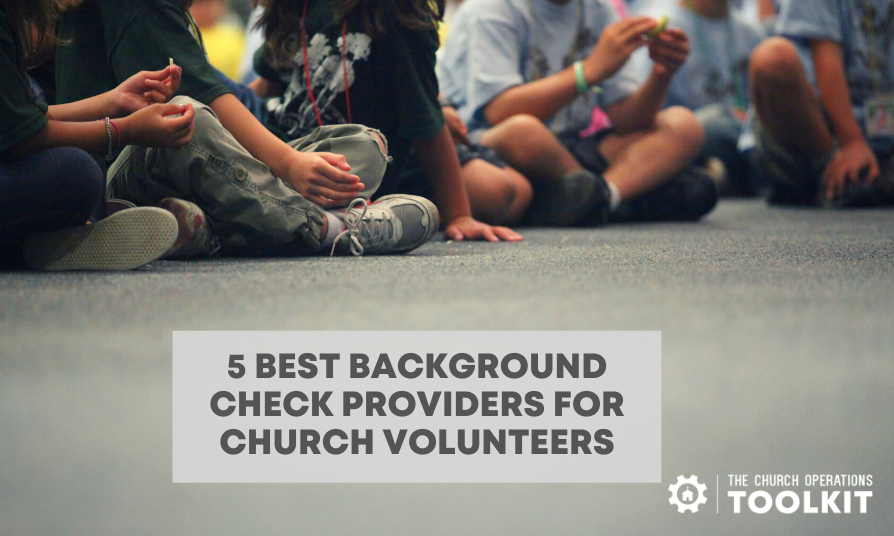As a church leader, you want children and their parents, to feel safe at church. This includes supporting parents as they work to “train up a child in the way he should go, and when he is old he will not depart from it.” Proverbs 22:6. That’s why I’m sure news stories regarding churches within the Southern Baptist Convention, what happened at NewSpring, and incidents within the Catholic Church must have hit your heart and served as painful wake-up calls that we have work to do to prevent child abuse within our churches.
It’s tempting to think “that could never happen at my church”. However, these tragic crimes have occurred in churches of various sizes, denominations, and in a variety of locations. Predators don’t care about the people they hurt or about the impact on your church – they only care about themselves. We must, as we read in 1 Peter 5:8, “Be alert and of sober mind. Your enemy the devil prowls around like a roaring lion looking for someone to devour.”
Fortunately, there are several practical steps you can take to prevent child abuse in your church.
Disclaimer: I am not a lawyer and do not attempt to provide legal advice. Please speak with church legal counsel to ensure your church’s policies adhere to applicable laws and regulations.
#1: Conduct Background Checks
If you’re already doing background checks on potential staff and volunteers, excellent. Please continue to do so and re-run those checks on a regular basis.
However, remember that a clear background check simply indicates an individual hasn’t been caught. It doesn’t prove they have never or would never abuse a child. In addition, not all background checks are created equal. Some vendors search more databases than others. Some jurisdictions are better about recording issues than others.
If you haven’t started performing background checks yet, look here for vendors to consider.
Bottom line: A background check is the minimum you should do to screen a potential employee or volunteer. It’s an excellent place to start, but it isn’t the finish line.
#2: Complete an Extensive Interview Process
As you look to hire new employees, you probably already go beyond a single interview and reading through the candidate’s resume. After all, you’re about to bring someone onto your staff who will have influence over the spiritual growth of others. You certainly don’t want to bring someone on-board who is a “sheep in wolves clothing.” People will look at them as spiritual leaders. In addition, this potential staff member may have direct contact with young people at your church. This means you’ll want to conduct in-depth interviews and contact the candidate’s references including previous ministry employers.
Take time to get your own impression of the candidate’s character. This may require several interviews and having elders or other staff members talk with the candidate as well.
Check out this list of interview questions from the Vanderblomen Search Group to spark ideas for what to ask candidates.
In this article, Richard R. Hammar of Church Law & Tax provides several recommendations for preventing child abuse.
#3: Carefully Screen Volunteers
We all know getting enough volunteers can be a challenge. If we put additional requirements in-place, that can make it even more difficult to fill all the needed volunteer positions.
However, the potential consequences of NOT properly vetting a volunteer vastly outweigh the inconvenience of a more rigorous process. You don’t want to tell a heartbroken parent that you didn’t screen the offending volunteer more closely because it was “too hard.” This more in-depth process should at least apply to any volunteer who would serve around minors.
What should be involved in screening potential volunteers?
- Require the potential volunteer to complete an application (request references on that application).
- Conduct a background check.
- Interview the potential volunteer.
- Require the potential volunteer to be an active member of the church for a set amount of time (perhaps a minimum of six months) before serving in a setting around minors.
#4: Establish (and strictly enforce) Protective Policies
To make sure all staff and volunteers are aware of your church’s policies regarding children, you’ll need to document those policies and require training.
In addition to initial training, constantly reenforce these policies:
- Place “cheat sheets” related to these policies in childcare rooms that staff and volunteers can quickly reference.
- Send out reminders about specific parts of the policy in weekly emails to volunteers.
- Review various processes during pre-service volunteer meetings.
The idea here is to keep these policies in front of staff and volunteers on a consistent basis.
If someone does not follow the policies, you need to enforce consequences. This could mean reassigning a volunteer, removing them from volunteering, or even firing an employee who fails to follow the policy.
Everyone needs to understand that you will not tolerate breaking these rules as they exist to protect all parties involved. Adopting a zero-tolerance stance isn’t easy, but you may only have to do that once to get the point across.
Here are several policy points to consider:
- Do not allow anyone (volunteer or staff) to work around minors unless he/she has completed the church’s screening process and has been approved.
- Only the child’s guardian (or guardian-approved adult with written permission from the guardian) may check the child in and out.
- Security personnel must be stationed around children’s areas whenever children are present.
- Set up security cameras in and around children’s areas. Monitor these and keep the video recordings for a set number of days.
- Never allow one adult (or even two related adults) to be alone in a room of minors or alone with a child, period.
- Cancel childcare if you don’t have enough cleared, qualified adults that day.
#5: Incident Response
If someone reports abuse by church staff or volunteer, immediately report this to the applicable authorities. When appropriate, gather church leaders together and prepare to respond to questions from the media and from the congregation. In addition, your church’s insurance company may require that you notify them in the event of an allegation of abuse.
Talk with your church’s legal counsel about your legal obligations regarding receiving reports of alleged abuse against a minor. Include those requirements in your church’s policies and procedures, then train all staff and volunteers on how to adhere to them.
On a Personal Note…
I’ve tried to approach this topic from a standpoint of providing practical tips. However, the reason I felt compelled to write this piece is how I felt after reading news stories and thinking about my children. Like most parents, I am fiercely protective of them. The thought of how they and our family would be affected should they be abused at church is unfathomable. I would much rather have a staff member tell me that childcare isn’t available because they didn’t have enough qualified volunteers than have something awful happen.
There are likely parents in your community who are wary of bringing their children to church after hearing these news stories. Please invest the effort now to review and tighten up your church’s policies and procedures. Then educate your congregation on the steps you’ve taken to protect their children. Add that information to your church’s website so potential visitors can see you’re serious about this issue.
Jesus used the illustration of being a shepherd and protecting His flock from wolves. That analogy seems to apply here as we seek to protect the most vulnerable in our congregations. There must be zero tolerance for not doing background checks or not vetting potential staff and volunteers. We must never overlook a lack of qualified volunteers in a room of children or neglect to follow reporting requirements of alleged abuse.
There are no valid excuses and it can happen at any church, regardless of size or denomination. While we shouldn’t live in fear, we have a responsibility to be vigilant. My prayer is these stories compel you to take any necessary actions and that this post provides you with ideas on how to get started.
Additional Resources to Prevent Child Abuse:
(1) “Child Abuse: Predator-Proof Your Organization” by Angela Lewton
(2) U.S. Department of Justice National Sex Offender Public Website
(3) “Prevent Child Sexual Abuse in the Church” via Brotherhood Mutual
(4) “Child and Youth Abuse Prevention Program for Religious Organizations” via Church Mutual
(5) “Abuse Claims Again the Top Reason Churches Go To Court” by Richard R. Hammar
(6) Church Law & Tax – If you subscribe to Church Law & Tax, they have several resources related to preventing child abuse, reporting requirements, and more.



